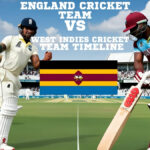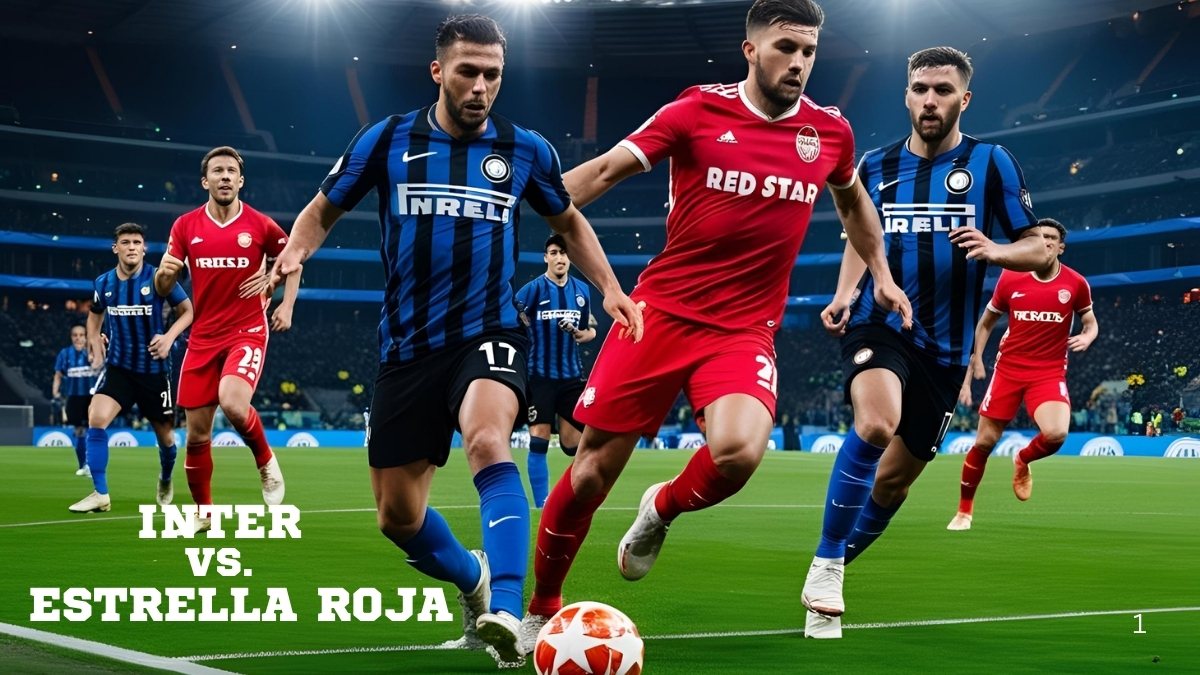
Inter vs. Estrella Roja: A Historic Clash of European Football Cultures
When Inter Milan and Estrella Roja (Red Star Belgrade) meet on the pitch, it’s more than just a football match — it’s a fusion of legacy, passion, and continental rivalry. These two storied clubs represent footballing excellence in their respective regions: Inter Milan, a titan of Italian and European football, and Estrella Roja, the pride of Serbia and the Balkans. Their encounters, though infrequent, are marked by intensity, strategy, and cultural resonance.
This article provides a detailed overview of the Inter vs. Estrella Roja rivalry, highlighting key matches, players, tactical evolution, and the broader significance of this compelling European football fixture.
Club Backgrounds: Giants from Different Arenas
Inter Milan: The Italian Powerhouse
Founded in 1908, FC Internazionale Milano has established itself as one of Europe’s premier football institutions. Known for their black and blue stripes, Inter have claimed numerous domestic and international titles, including:
-
Serie A titles: 19 (as of 2025)
-
UEFA Champions League titles: 3 (1964, 1965, 2010)
-
Coppa Italia and Supercoppa Italiana: Multiple wins
Inter’s legacy is built on tactical discipline, defensive strength, and continental ambition. Legendary players such as Javier Zanetti, Ronaldo Nazário, Giuseppe Meazza, and most recently Lautaro Martínez have left their mark in Nerazzurri colors.
Estrella Roja: The Balkan Champions
Crvena Zvezda, internationally known as Red Star Belgrade, was founded in 1945. They are Serbia’s most successful club and a historic force in Eastern European football. Their crowning achievement remains:
-
European Cup win in 1991, defeating Olympique Marseille in the final.
Their passionate fan base, known as the Delije, creates one of the most electric atmospheres in Europe at the iconic Rajko Mitić Stadium. The club has dominated domestically and frequently competes in UEFA competitions, often punching above its financial weight.
Historical Encounters: Inter vs. Estrella Roja in Europe
While the two clubs haven’t met often, their most memorable and historically significant encounter came during the UEFA Cup 1990–91 season, coincidentally the year Estrella Roja would go on to conquer Europe.
UEFA Cup Round of 16, 1990–91
-
First leg (San Siro, Milan): Inter Milan 1–1 Estrella Roja
-
Second leg (Belgrade): Estrella Roja 2–1 Inter Milan (aggregate: 3–2)
This tie was a statement by Estrella Roja, signaling their rise as European contenders. Despite Inter fielding a strong squad that included Lothar Matthäus and Walter Zenga, Red Star’s mix of tactical discipline and technical quality prevailed.
Key players for Estrella Roja during that era included:
-
Dejan Savićević – Creative and explosive attacking midfielder
-
Robert Prosinečki – Midfield maestro
-
Vladimir Jugović – Versatile and intelligent playmaker
This victory gave Red Star the momentum they needed to go all the way and win the European Cup, defeating Bayern Munich in the semis and Marseille in the final.
Tactical Battles: Philosophy Clash
Inter’s Style: Structure and Strategy
Traditionally, Inter Milan has employed a defensively solid and tactically structured style of play. Whether under managers like Helenio Herrera (catenaccio), José Mourinho (counter-attacking mastery), or Simone Inzaghi (possession with pace), Inter’s football blends Italian tactical heritage with modern efficiency.
Key tactical elements:
-
Deep-lying defense with fast transitions
-
Emphasis on wing-backs and overlapping runs
-
High pressing in critical phases of the game
Estrella Roja’s Style: Technical Flair with Grit
Red Star’s approach, particularly during their golden era, has always balanced Eastern European technicality with tenacity. Their gameplay reflects regional influences—creative midfielders, strong central defenders, and quick wingers.
Modern-day Estrella Roja under domestic coaches has emphasized:
-
High pressing in home matches
-
Compact midfield formations
-
Set-piece threats and long-range shooting
Fan Culture: San Siro vs. Marakana
One of the standout features of any Inter vs. Estrella Roja matchup is the atmosphere.
-
San Siro (Inter’s home) is one of the most iconic football stadiums in the world, holding over 75,000 fans. When full, it’s a cauldron of noise, especially during European nights.
-
Rajko Mitić Stadium (nicknamed Marakana) is known for its intimidating energy, flares, chants, and relentless support from the Delije. The stadium can hold over 50,000 and is considered one of the toughest venues in Europe for visiting teams.
When these two environments collide, especially in a two-legged European tie, the football becomes secondary to the spectacle of passion from both sides.
Recent Form and Contemporary Relevance
In the modern football landscape, both clubs continue to perform strongly in their respective leagues and European competitions.
Inter Milan (2020–2025)
-
Serie A Champions in 2021 and strong contenders since
-
Champions League Finalists in 2023
-
Under Simone Inzaghi, Inter have returned to top European form with a mix of youth and experience
Key players:
-
Lautaro Martínez – Captain and talisman
-
Nicolo Barella – Midfield engine
-
Alessandro Bastoni – Modern ball-playing center back
Estrella Roja (2020–2025)
-
Serbian SuperLiga champions multiple times
-
Regular group stage appearances in UEFA Champions League and Europa League
-
Under coach Barak Bakhar (2023–), the club has focused on youth development and maintaining European competitiveness
Emerging talents:
-
Osman Bukari – Speedy winger
-
Mirko Ivanić – Creative playmaker
-
Aleksandar Dragović – Experienced center-back anchoring the defense
Inter vs. Estrella Roja: The Significance of the Fixture
Despite not being a traditional rivalry like Real Madrid vs. Barcelona or Inter vs. Milan, the Inter vs. Estrella Roja matchup holds special value for several reasons:
-
Legacy Respect: Both clubs have won the European Cup and earned historic accolades that command respect across the continent.
-
Clash of Cultures: Italian tactical discipline versus Balkan creativity and resilience.
-
Underdog vs Giant: Red Star often plays the role of the underdog, making every upset a headline story.
-
Symbol of Changing Europe: From Cold War geopolitics to modern football economics, this fixture represents football’s evolution in Europe over decades.
Potential Future Encounters
With both clubs consistently qualifying for European competitions, another clash between Inter and Estrella Roja is always possible, whether in the Champions League group stage, Europa League knockouts, or even the UEFA Super Cup (if both win respective tournaments).
Fans would welcome such a fixture, not only for the competitive value but for the historical resonance it brings.
Conclusion: A Fixture Worth Remembering
The story of Inter vs. Estrella Roja is a microcosm of European football — rich in history, full of tactical nuances, and driven by passionate support. While they may not face each other regularly, every encounter feels like a chapter in a grander story of European football’s evolution.
Whether you’re a die-hard Interisti or a loyal Delije, one thing is certain — this is a clash where football, culture, and history all meet under the floodlights.









Post Comment